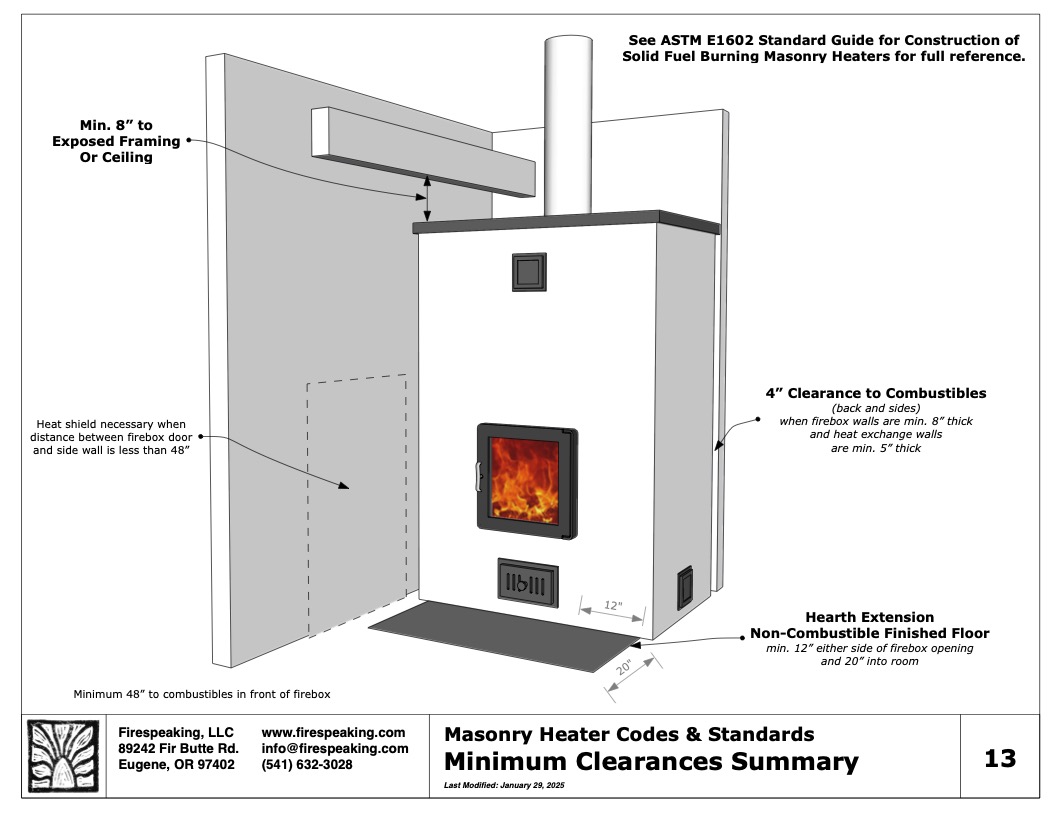
Custom masonry heaters are fully permitable in the United States thanks to their inclusion in the US Building Codes and their acceptance by the EPA.
US Masonry Heater Building Codes
Masonry Heater construction is addressed in section R1002 of Chapter 10 of the IRC, entitled “Chimneys and Fireplaces”:
R1002.2 Installation. Masonry heaters shall be installed in accordance with this section and comply with one of the following:
1. Masonry heaters shall comply with the requirements of ASTM E 1602; or
2. Masonry heaters shall be listed and labeled in accordance with UL1482 and installed in accordance with the manufacturer’s installation instructions.
What this means basically is that manufactured masonry heaters should have a UL listing while custom masonry heaters should follow the guidelines set forth in the ASTM E1602 standard. This pass-through reference means that the majority of the code referring to custom masonry heaters is in the ASTM standard.
The rest of the section on masonry heaters in the IRC is brief but does lay out important prescriptions for seismic reinforcing and minimum clearance to combustibles. A full article to better understand the prescriptions offered for masonry heater foundations is available here.
ASTM E1602 Standard for Solid Fuel Masonry Heaters
The ASTM E1602 Standard for Solid Fuel Burning Masonry Heaters is the defining document for best and safe masonry heater construction practices. Any architect, builder, or building official involved in masonry heater design and construction should own a copy of this document.
The ASTM Standard defines a masonry heater and addresses basic masonry heater designs, acceptable materials used, further specifies clearances to combustibles, hearth extension requirements, outside air requirements, cleanouts and wing walls. We hope to provide additional detailed articles describing each of these items in the future and make sure to join our mailing list to receive updates.
EPA & Emissions Regulation
Masonry heaters do not currently require EPA certification. This determination was reinforced by the current New Source Performance Standard (NSPS) released by the EPA where it recognized the inherent clean-burning nature of masonry heaters and also to give time for the industry to futher develop testing standards.
Canadian Masonry Heater Building Codes
Masonry heaters are not yet recognized in the Building Code of Canada (BCC), or the individual provincial codes based on BCC. The International Code Council has recently been accredited to develop National Standards of Canada, and hopefully this will eventually result in code provisions for masonry heaters similar to IRC.
Local authorities may accept a WETT inspection. Also, WETT inspections are increasingly required by home insurance companies in Canada.
Wood Energy Technology Transfer Inc. (WETT Inc.) is a non-profit training and education
association managed by a volunteer Board of Directors elected by holders of valid WETT
certificates. Through professional training and public education, WETT Inc. promotes the safe
and effective use of wood-burning systems in Canada.
The WETT Reference Manual includes the following guidance for masonry heaters:
9.3.1 General …While conventional masonry fireplaces are designed mainly for aesthetics and used for fire viewing, masonry heaters are designed to produce efficient, low emission heating. This is
accomplished by burning the wood quickly in a hot, turbulent fire. The heat from the exhaust
gases is transferred to the mass of the masonry structure. The heat then radiates slowly into the
room for the following several hours.9.3.2 Code Requirements for Masonry Heaters In the absence of certified manufacturer’s installation instructions, masonry heaters should be built in accordance with the requirements for masonry fireplaces found in building codes. The requirements for proper footings, masonry structural principles and clearances found in the building code should be followed.
WETT does not yet have inspection checklists specific to masonry heaters. It has a “Masonry Chimney & Fireplace” checklist and a “Wood Stove, Flue Pipe & Manufactured Chimney” checklist.
–The section on Canadian code is a guest contribution by Norbert Senf, MHA founding member.
History
We are very lucky that a dedicated group of American and Canadian masonry heater enthusiasts and professionals joined together during the 1980s to get clear references to masonry heaters into the U.S. building codes and developed the ASTM Standard for custom masonry heater construction. This effort was one of the galvanizing forces for the creation of the Masonry Heater Association of North America. For the time being, there is a very clear pathway for individuals in the U.S. to apply for and receive permits for custom masonry heaters through their local building departments.
The future of regulation with regards to emissions is a little less certain. As powerful residential heating appliances, masonry heaters are unique in that they are site-built by disperse expert artisans rather than centrally manufactured. Furthermore, it has proven difficult to compare masonry heater emissions directly to wood stoves with a g/hr rate because the heat generated by a masonry heater in a couple of hours of combustion is stored and continues to radiate into the next day. For now, the EPA has held off on requiring certification of custom masonry heaters.
Design & Permitting Recommendations
A masonry heater project typically is permitted through a building department under a mechanical permit. This mechanical permit may either be a part of a house’s new construction or substantial remodel submission or it can be a standalone mechanical permit in the case of a construction project focused specifically on the masonry heater. In the latter case, drawings of the project may not be required. We recommend, however, that you submit drawings and request a plan review. This gives the building department an opportunity to address any concerns that they have and allows you to seek pre-approval for your plans so that a building inspector knows what to expect when they arrive on site and can have the confidence that they are inspecting something that has already been reviewed.
We recommend that masonry heater construction documents include the following important details:
- Placement in Floor Plan – Drawings should precisely indicate the location of the masonry heater in your floor plan. This plan drawing should show all applicable clearance to combustibles, whether wing walls are being used to integrate the heater into the architecture, and the minimum requirements for a non-combustible hearth extension. Although not necessary for submission drawings, we recommend you strongly consider where your firewood fuel will be stored in the floor plan and the path for bringing in the firewood from outside the house.
- Foundation Details – Your drawings should detail the foundation you are planning in the context of your crawl space, basement or slab-on-grade construction. It should show your footing details, the foundation stem walls, and the foundation capping slab, whether you are including a structural insulative layer in the plane of the subfloor insulation, and your overall rebar and concrete design.
- Chimney Plan – Drawings should show the location of the chimney in plan view and a vertical elevation showing how the chimney meets all clearances to combustibles and meets the prescription of terminating a minimum of 2 ft. higher than any part of the building within 10 ft. This drawing is both useful for approvals as well as chimney parts take-off and estimating.
- Outside Air – Drawings should show whether outside air is being planned and how it will be administered.
While generally not necessary for submissions, we also recommend having a floor framing plan clearly showing the masonry heater and how the floor will be framed around it to meet the requirement for foundation clearance to framing. The sum of these drawings will not only ensure a smooth process with the building department, but also good communication and understanding between the different tradespeople involved in the project so that it can go as smoothely and efficiently as possible.
Here is an example of an architectural sheet for a masonry heater project that can be included in an overall plan submission and referred to by everyone involved in the project:
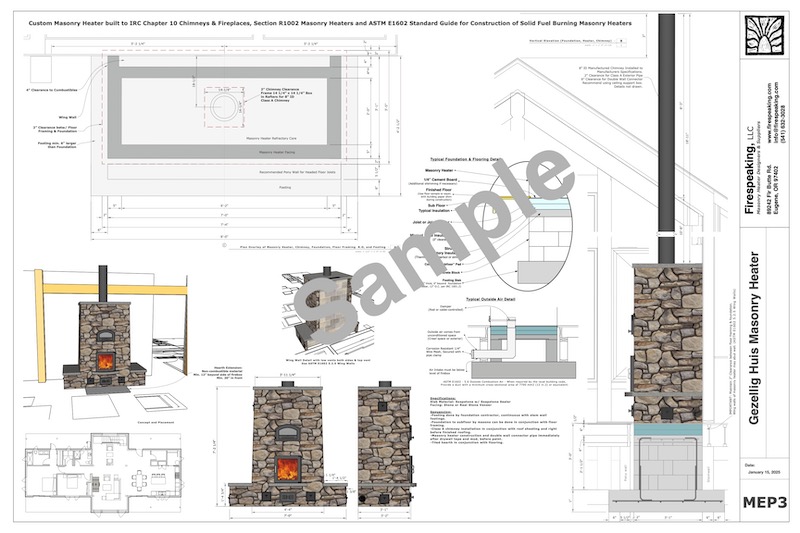
If you are interested in assistance with overall masonry heater design for your home or in producing construction documents for plan approval and construction, this is one of our core services and we would be happy to work with you. Please use our Client Intake Form to begin your inquiry.
References
- US Masonry Heater Building Codes
- 2024 International Residential Code (IRC), Chapter 10 Chimneys and Fireplaces, Section R1002 Masonry Heaters
- 2024 International Building Code (IBC), Chapter 21 Masonry, Section 2112 Masonry Heaters
- ASTM Standard E1602 Standard Guide for Construction of Solid Fuel Burning Masonry Heaters
- National Fire Protection Agency (NFPA) 211 Standard for Chimneys, Fireplaces, Vents, and Solid Fuel-Burning Appliances – This standard is not specifically referenced in masonry heater code but exists as an important background document that informs standard for wood-fired devices.
- The EPA and Emissions Regulations
- Canadian Building Code References
- Building Code of Canada (BCC)
- Wood Energy Technology Transfer Inc. (WETT Inc.)

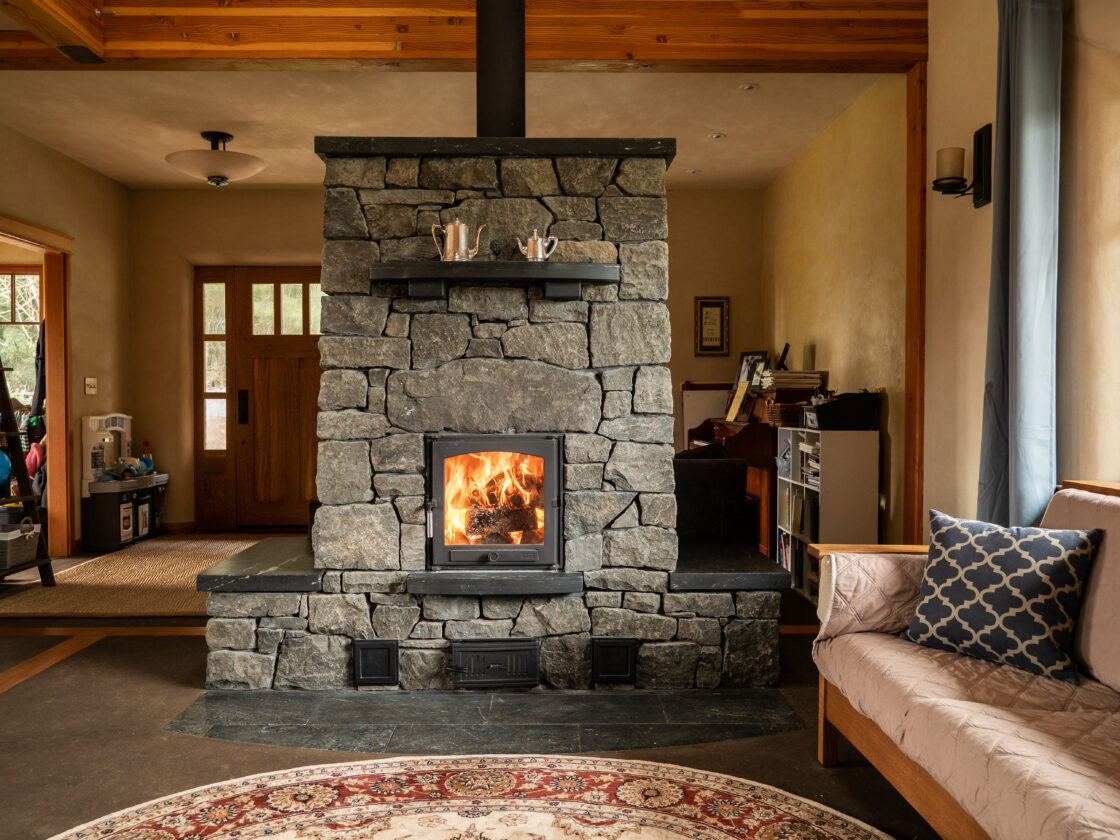
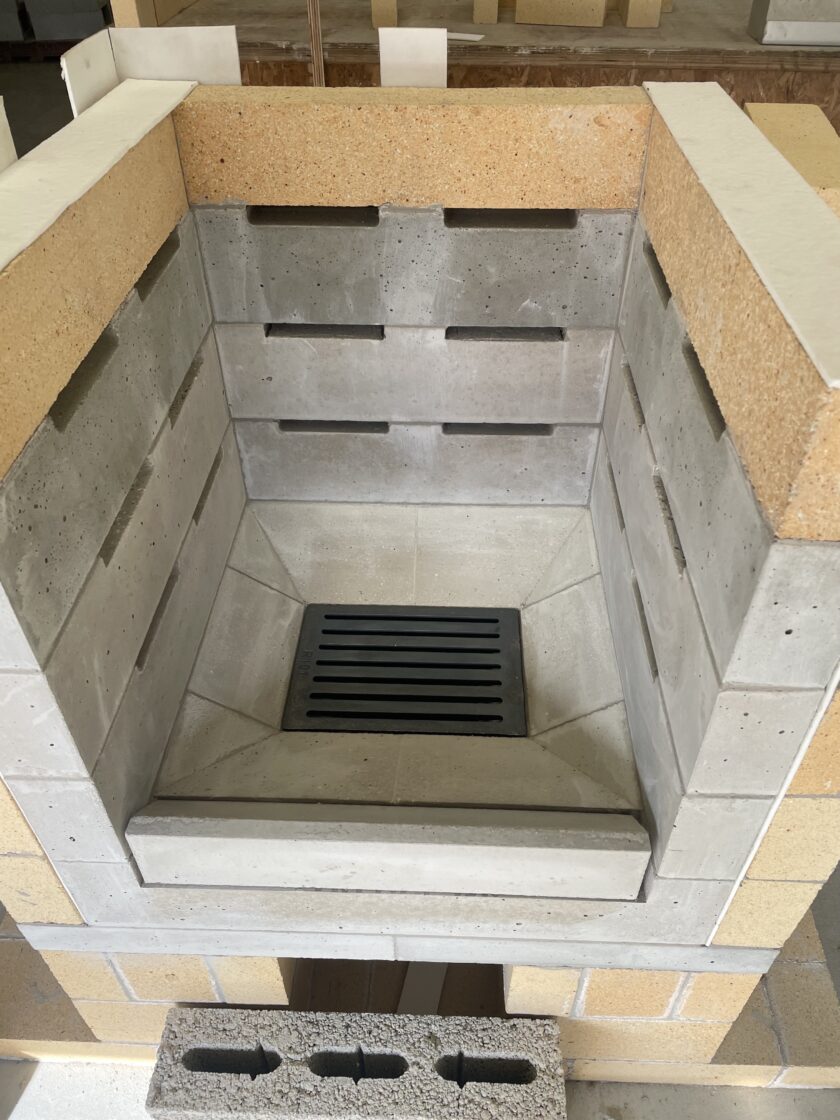
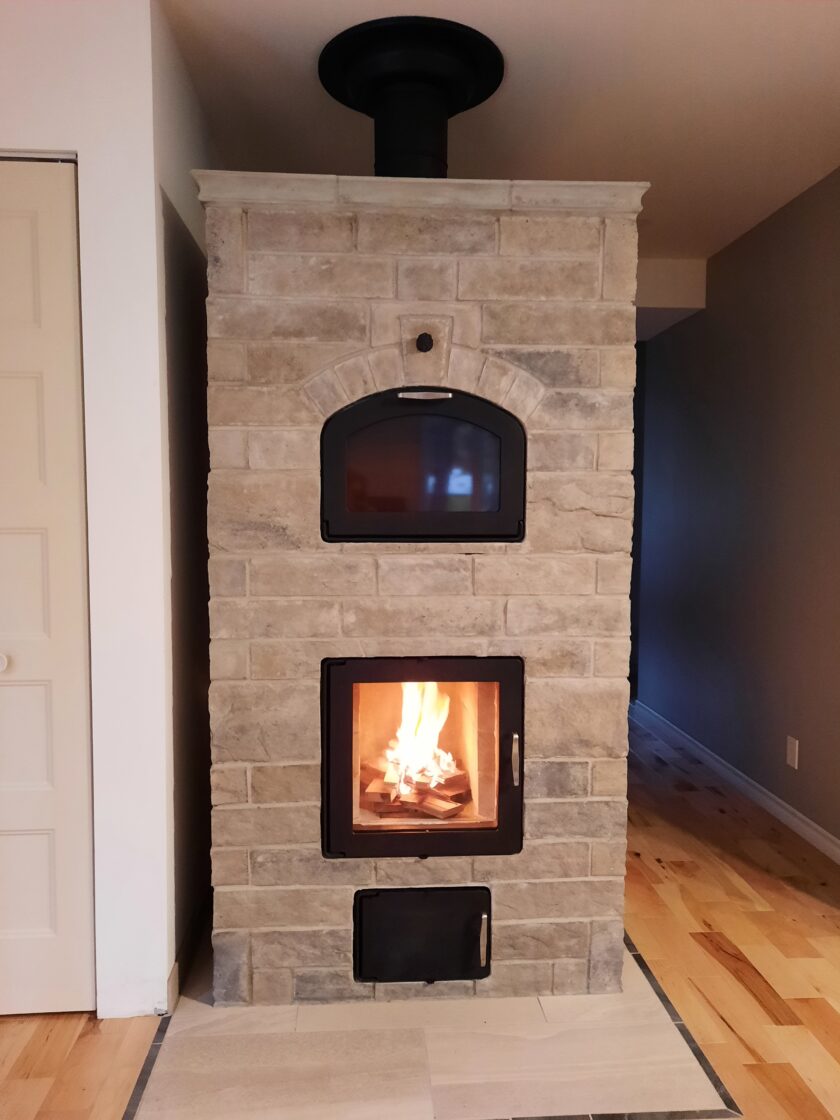
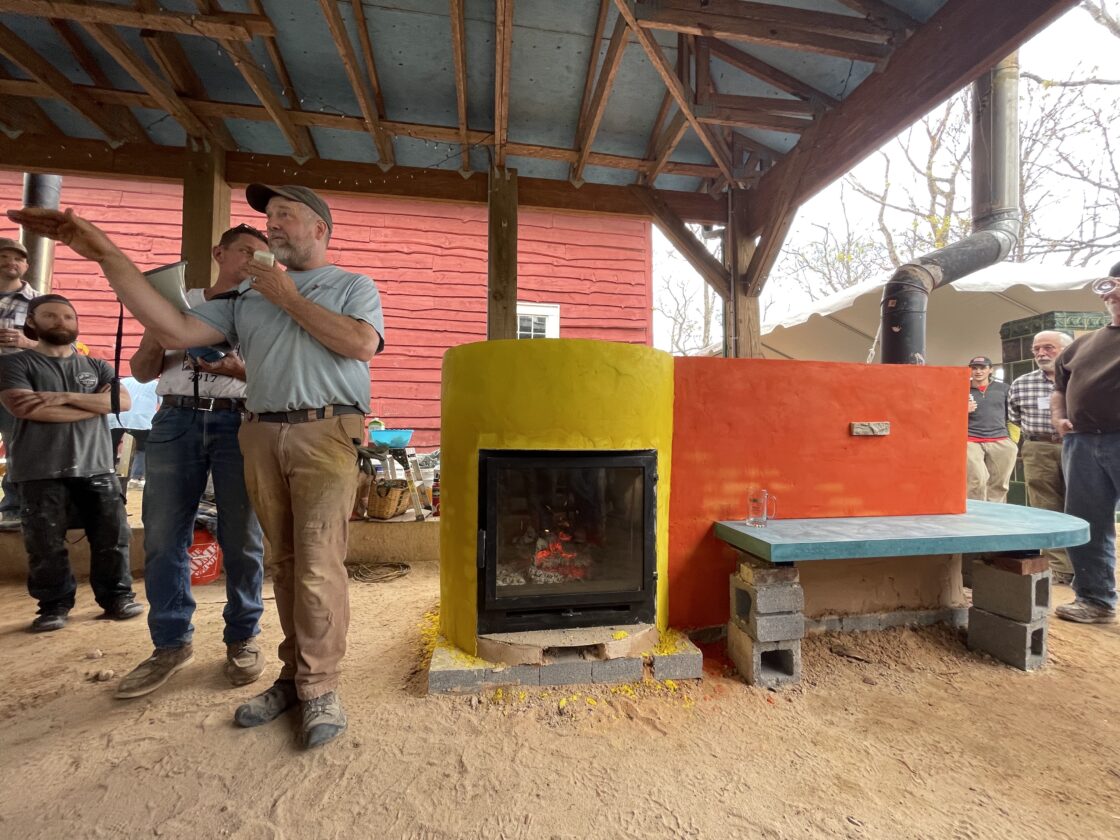
Hi There. Currently interested in this topic. Let me remark other three standards on the topic:
ASTM E2778 Standard Specification for Custom Tiled/Mortared Masonry Heaters (Stoves)
ASTM E2817 Standard Test Method for Test Fueling Masonry Heaters
CAN/CSA B415.1 Performance Testing Of Solid-Fuel-Burning Stoves, Inserts, and Low_Burn-Rate Factory-Built Fireplaces
Saludos.
@PabloK, it is an honor to have your presence in the forums! For those that don’t know of @PabloK 's work, he is very active in both heater construction and education in Argentina. I came to know of his work through his Instagram account:
Thank you for listing these relevant ASTM standards. The ASTM E1602 Standard Guide for Construction of Solid Fuel Burning Masonry Heaters has been the most relevant and the one I am most familiar with since it is specifically referenced in the building code. As a professional heater builder, it has been worthwhile to have a copy and be able to reference it when any questions came up with local building officials. I would like to write a follow-up article summarizing its most important specifications.
I had no idea about the “ASTM E2778 Standard Specification for Custom Tiled/Mortared Masonry Heaters (Stoves)”. My guess is that it was put together by a contingent of heater builders that were part of AMHOP, a now apparently defunct association of heater builders that had split off of the Masonry Heater Association (MHA). Does anyone on this list have any familiarity with the contents of this standard? Is it worth purchasing?
@mheat (Norbert Senf), is an authority on the final two you cited which have more to do with efficiency testing:
I should say also that I published the article that started the thread rather hastily in order to start this thread and that I look forward to improving it. Discussion here will certainly lead to its improvement.